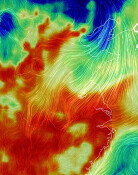Preemptive Deterrence
After the sinking of the naval patrol ship Cheonan, disputes have broken out over what caused the vessel to break into two, who is responsible for the disaster, the response of the South Korean military to the incident, and what South Korea will do if North Korea is found responsible. Needless to say, the South must deal with such an incident after the fact. But more important is figuring out why the incident was not prevented and the patrol ship was broken helplessly.
The sinking of the patrol ship within the territorial waters due to an external attack shows the South Korean Navys failure to gather intelligence and pursue guard operations. The North has been pointing its guns at the South for 65 years, and if Pyongyang is confirmed to have sunk the Cheonan, the Navys failure will be even bitterer. The South Korean military and intelligence agencies have the responsibility of protecting the nation and people from external enemies. They should also put a higher priority on prevention and deterrence. In other words, the first task is to arm themselves with an airtight guard, intelligence and military strength, and discourage enemies from looking for an opportunity to attack. Preemptively detection of attack signs and deterrence against an enemy attack are also needed. Countermeasures should come next.
North Korea publicly swore revenge after its defeat in an inter-Korean naval clash near Daecheong Island in November last year. Pyongyang also does not recognize the inter-Korean border, also known as the Northern Limit Line, in the Yellow Sea. It has also fired coastal artillery shells near border several times. Many signs indicate that the North will cause more provocations in the Yellow Sea. Inter-Korean relations were rattled before the Cheonan sinking, so the North probably chose the Yellow Sea as an area to provoke the South. Accordingly, the South Korean military and intelligence agencies should have watched better North Koreas movements there.
The first thing is to verify if the South Korean military failed to detect signs of a North Korean provocation or if it failed to deal with provocations appropriately even after seeing signs. The next step is to confirm whether the mistake was caused by a breakdown in equipment, system, discipline or communication. Why the South Korean Navy did not detect the North Korean submarines invasion and torpedo attack must also be known. Was the incident caused by a lack of or defective detectors, failed naval guard, the Cheonans incomplete preparedness to guard itself from external attack, or the vessels carelessness? Only when the root causes are brought to light can measures to prevent a recurrence be found.
The South Korean government and military need tighter security policies and posture to prevent crises such as the sinking from happening in the first place.







